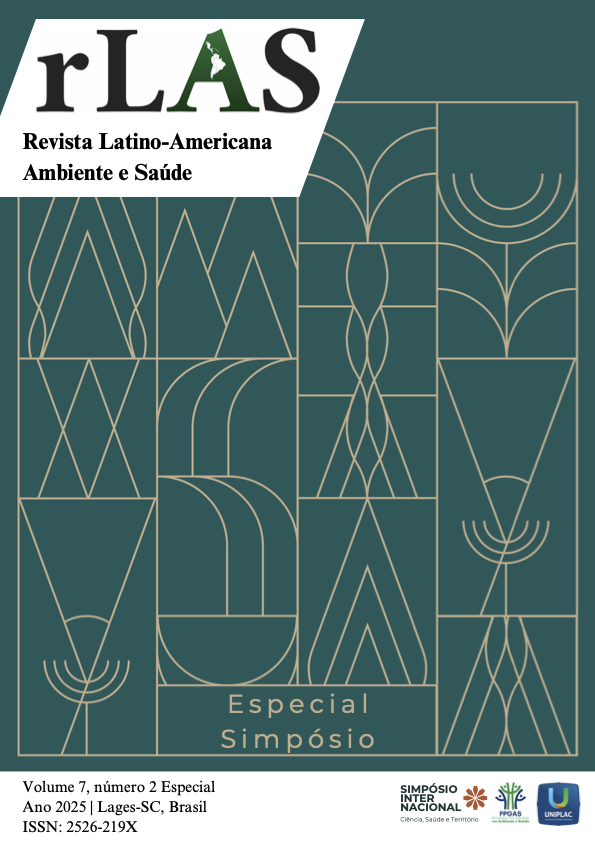Sustainable manufacturing of a respiratory muscle strengthening prototype made with 3D printing
Keywords:
Respiratory muscles, 3D printing, Equipment and suppliesAbstract
Introduction: Respiratory muscle weakness can impair ventilatory function and reduce individuals' quality of life. Although commercial devices for inspiratory muscle training, such as the POWERbreathe Classic™, are available, their high cost remains a barrier to access for a large portion of the population. Objective: This study aimed to develop a prototype for respiratory muscle strengthening through additive manufacturing using three-dimensional (3D) printing. Materials and Methods: Inspired by the POWERbreathe Classic™, the device was modeled using Fusion 360® software and fabricated with polylactic acid (PLA), a biodegradable and biocompatible polymer. The fused deposition modeling (FDM) technique was employed on a Creality K2 Combo 3D printer. Four main parts were produced: upper chamber, lower chamber, adjustment screw, and doser. Results: The produced parts showed high fidelity to the digital model, with precise finishing, compatible structure, and functional fittings. The prototype’s design allowed for the incorporation of disposable mouthpieces and improvements that facilitated the assembly between parts, enhancing hygiene and enabling shared use, which reinforces its potential for practical application in clinical and home settings. Conclusion: 3D printing may represent an accessible and functional solution for respiratory muscle strengthening, especially in contexts of economic limitation, promoting greater equity in access to healthcare. However, validation of the device’s use is necessary to ensure its efficacy and safety.
References
BARCENA, A. J. R. et al. Emerging Biomedical and Clinical Applications of 3D-Printed Poly (Lactic Acid) -Based Devices and Delivery Systems. Bioengineering, Basel, v. 11, n. 7, p. 1-24, jul. 2024.
BRAGA, E. J. et al. O uso da impressão 3D na medicina. São Paulo: Editora Científica Digital, 2023.
BRASIL. Presidente sanciona Orçamento de 2025 com aumento do salário-mínimo para R$ 1.518. Portal Gov.br, Brasília, 2025. Disponível em: https://www.gov.br/planalto/pt-br/acompanhe-o-planalto/noticias/2025/04/presidente-sanciona-orcamento-de-2025-com-aumento-do-salario-minimo-para-r-1.518. Acesso em: 4 maio 2025.
HUSSAIN, M. et al. A review on PLA-based biodegradable materials for biomedical applications. Materials Today Bio, v. 24, p. 1-24, 2024.
IBGE. IBGE divulga rendimento domiciliar per capita 2024 para Brasil e unidades da federação. Agência IBGE Notícias, Rio de Janeiro, 2024. Disponível em: https://agenciadenoticias.ibge.gov.br/agencia-sala-de-imprensa/2013-agencia-de-noticias/releases/42761-ibge-divulga-rendimento-domiciliar-per-capita-2024-para-brasil-e-unidades-da-federacao. Acesso em: 4 maio 2025.
MENZES, K. K. P. et al. A review on respiratory muscle training devices. Journal of Pulmonary & Respiratory Medicine, [S.l.], v. 8, n. 2, p. 1–7, abr. 2018.
MORTARI, B. R.; MANZANO, R. M. Efetividade de diferentes protocolos e cargas utilizadas no treinamento muscular inspiratório de indivíduos com DPOC: uma revisão sistemática. Fisioterapia e Pesquisa, São Paulo, v. 29, n. 3, p. 303–310, fev./ago. 2022.
SANTOS JÚNIOR, H. C. F. et al. Análise da custo-efetividade da órtese biomecânica por tecnologia de impressão 3D na reabilitação pós acidente vascular cerebral isquêmico. Revista Eletrônica Acervo Saúde, v. 24, n. 2, p. 1-9, fev. 2024.
VILAÇA, A. F. et al. O efeito do treinamento muscular inspiratório em idosos sobre a qualidade de vida, resposta imune, força muscular inspiratória e de membros inferiores: um ensaio clínico randomizado. Revista Brasileira de Geriatria e Gerontologia. Rio de Janeiro, v. 22, n. 6, p. 1–11, fev. 2020.
WEST, J. B. Fisiologia respiratória: Princípios Básicos. 9. ed. Porto Alegre: Artmed, 2013.


